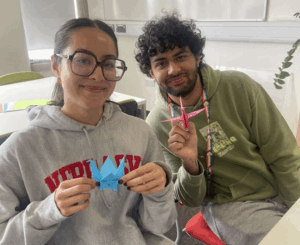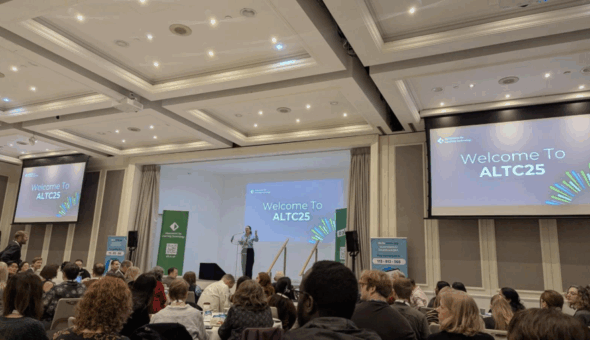What do students really want from your Moodle course page?
Clarity. Structure. Easy access to key information. These aren’t just nice-to-haves - they’re essential for helping students feel confident and supported in their learning.
This summer, Nadia Gauhar (MSci Natural Sciences – Year 1) and Vivek Yasvanim (BSc Mathematics – Year 1) joined the Faculty of Science as part of the Bath Insights Internship scheme, working full-time to improve Moodle accessibility and consistency across five departments. Their goal? To make Moodle pages easier to navigate, more inclusive, and better aligned with the Bath Blend Baseline.
From Student Experience to Staff Perspective
As students themselves, Nadia and Vivek brought a unique lens to the project. They knew firsthand the challenges in searching for assessment details, contact information or trying to decode inaccessible files, that can be improved with a few thoughtful changes.
Working across Chemistry, Life Sciences, Computer Science, Mathematics, and Physics, they applied their insights to over 300 Moodle pages and fixed 6,000+ accessibility errors, making improvements that benefit both students and staff.
What They Did - And Why It Matters
Their work followed three key phases:
1. Fixing Accessibility Errors
Using the Accessibility+ Toolkit, they corrected thousands of issues:
- Bold and italics formatting
- Empty header tags
- Missing alt text for images
- Unclear or broken link text
These changes make Moodle more usable for students with visual impairments or dyslexia, especially those using screen readers.
2. Adding Essential Information Consistently
They ensured every page included:
- Announcements, Q&A Forum, and Library List blocks
- A ‘Welcome & Introduction’ section with unit synopsis and accurate convenor contact details
- An Assessment Information section with dates, weightings, and academic integrity training links
This helps all students easily find information and reduces routine queries to staff.
3. Restructuring for Clarity
Many pages had long, unstructured lists of files. These were reorganised with:
- Descriptive Activity names (e.g. Lecture 3: Enzymes – slides)
- Clear headings based on teaching activities (Lectures, Tutorials, Labs)
- Consistent layouts across departments
These improvements benefit all staff and students, and are especially helpful for those with visual impairments, dyslexia, and other neurodivergent students.
Make Your Moodle Page More Student-Friendly
Despite the improvements made by Nadia and Vivek, they couldn’t address every area or unit, so we will need the support of Unit Convenors and Departments to support the legacy of this work. Here are some practical steps you can take right now:
When uploading files:
- Use descriptive file and Activity names (for example ‘Lecture X: [Topic] – slides’) to help students identify what it contains
- Use Word or PowerPoint over PDFs to make them more accessible
- Warn users if links open in a new window to support those with visual impairments.
For overall layout in Moodle:
- Keep structure consistent within a unit and across the department so students know where to find information across all units
- Use headings to structure teaching activities, avoiding long lists of files
- Carefully use colour: avoid low-contrast colours, and also use bold or headings styles for emphasis For more guidance, explore the Bath Blend Baseline.
From Interns to Insight: What This Experience Taught Us (from Nadia & Vivek)
"This internship taught us how small design choices can have a big impact. We hope our work helps staff see Moodle not just as a repository, but as a space for clear, inclusive learning for students.
Overall, the internship offered valuable insight into a professional working environment and gave us a chance to develop skills that are not typically required of students in a university setting. From navigating technical barriers to adjusting to a full-time schedule, the experience helped us grow both personally and professionally."

Blog from the TEL team, with input from students Nadia Gauhar (MSci Natural Sciences) and Vivek Yasvanim (BSc Mathematics)
Respond

